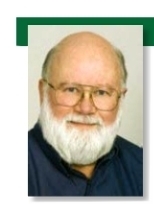 |
 |
| |
www.K2TQN.com/
Monthly Support page for the Vintage Radio column in QST® magazine. Most months I provide additional information about the profiled radio or content of the column.
|
January 2014
A 1922 Trans-Atlantic Story
|
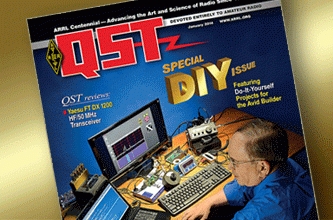 |
Cass Risley, 3BGT, W3BGT, W2BGT
One of the older hams that came to my local club meetings, when I was a young teen was Cass Risley, W2BGT. My dad knew him too, and was impressed when I came home and told him that he was at the diner afterwards. Dad told me that Cass owned a Rolls Royce and had a huge ham station in his home, which was located near the beach. I later learned that Cass's family owned a large laundry business which serviced the Atlantic City hotels since the late 1800s. Cass would always give a DX report at the meeting, as he operated 20-meter AM phone almost exclusively, and had many ham friends around the world. |
|
| |
| |
| |
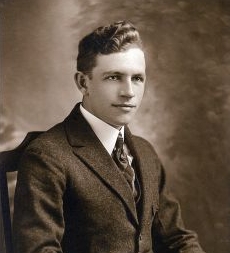
|
List of stations heard in Europe
during the 1922 Trans-Atlantics,
February 1923, Wireless Age.

|
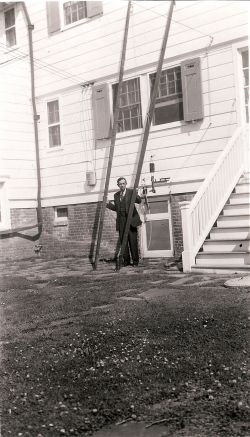
Aerial Specifications
"My aerial is of the inverted L type, consisting of 12 wires stretched between two spreaders of wood, each of which is 20 feet long (see above). One terminal of this aerial is supported by a mast 72 feet above the ground; the other end being supported by the peak of the house, 38 feet high. Each aerial wire is carried by a three inch Insulator. Ground connection is the city water pipes, also six copper wires buried six inches in the ground, and a large piece of sheet iron buried six feet underground.”
"The Wireless mast is of all metal Tubing. The iron pipe is four inches in diameter at the bottom, with a diameter at the middle of three and one-half inches, and a top width of three inches. This mast extends into the ground four feet. The height of the mast above ground is 72 feet, and it is supported by nine guy wires.”
Cass Risley, 3BGT |
|
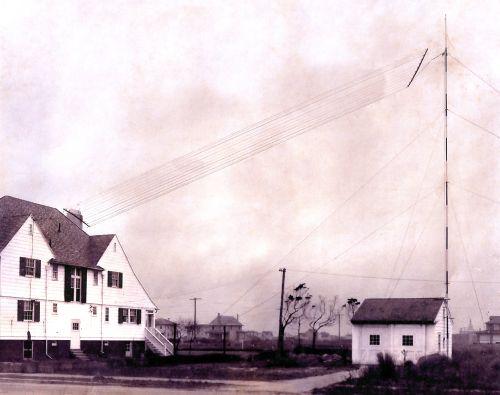 Cass Risley's 1922 family home in Atlantic City, now Margate, NJ.
Cass Risley's 1922 family home in Atlantic City, now Margate, NJ.
|
What was the Trans-Atlantic Test
of 1922?
From Feb 1923 QST page 8
"The tests covered a 20-day period from Dec. 12th to Dec. 31st, 1922, inclusive, which was divided into two equal sections, the transmission each night occurring from midnight to 0600 G.M.T. During the first ten nights American and Canadian amateurs transmitted while European amateurs listened. The first two and half hours of operating period of each of these nights was given over to "free-for-all" transmission by each inspection District in the United States and Canada, in 15-minute sections, the schedule rotating each night. In the remaining three and a half hours of each of these nights, the 324 American stations which had qualified in the Preliminary Tests and won special identifying code letters transmitted for 15-minute periods in groups of from 22 to 25 each. … [The reports showed] that a total of 315 different United States and Canadian amateurs were heard across the Atlantic!" |
|
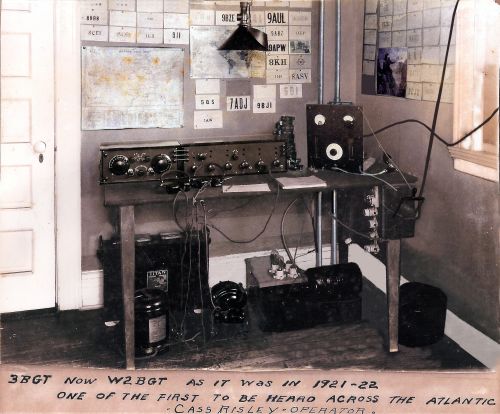 |
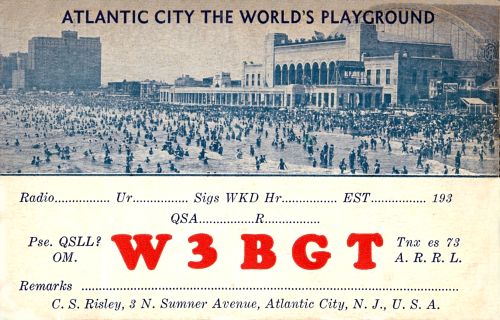 |
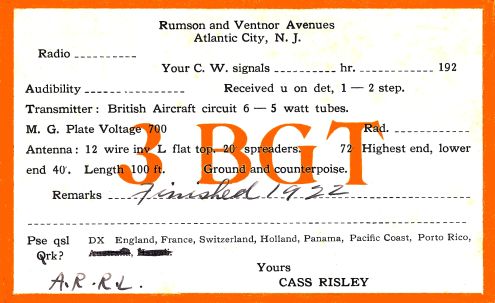 |
| |
Cass Risley built the newly developed John Reinartz Tuner, first mentioned in the Jun 1921 QST and again in the Mar 1922 QST. Cass added four extra stages of audio amplification. This was a superior receiver that most hams couldn't match. It's obvious that these two circuits were merged. The reason for the big audio amp is, RF amplification had not been perfected yet, so they amplified everything to hear weak signals, noise and all. [ There is no written record of Cass' circuit, so this is a best assumption. ] - Thanks to Al Klase, N3FRQ, for finding the amp ckt designed by Charles Leutz in 1920.
|
|
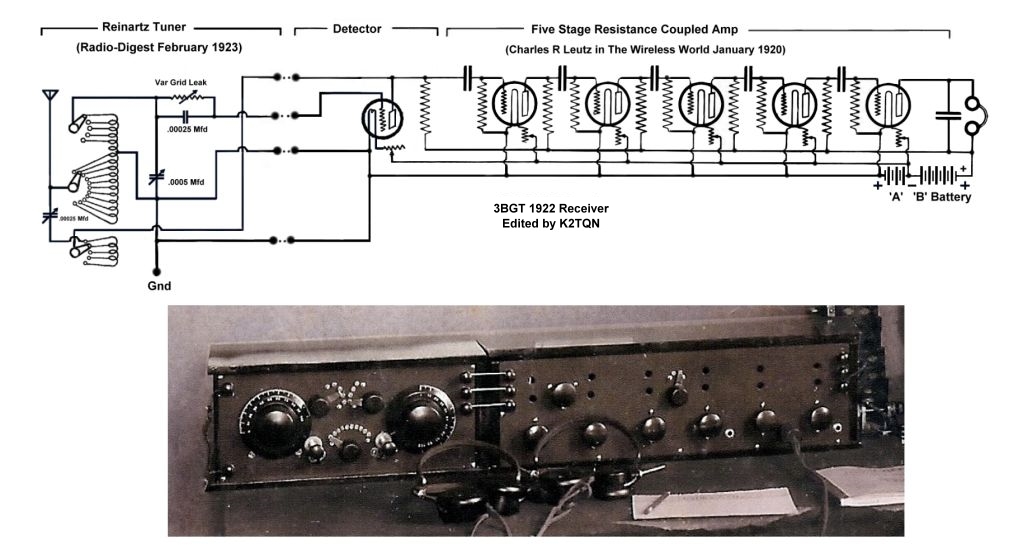
|
| |
| |
|